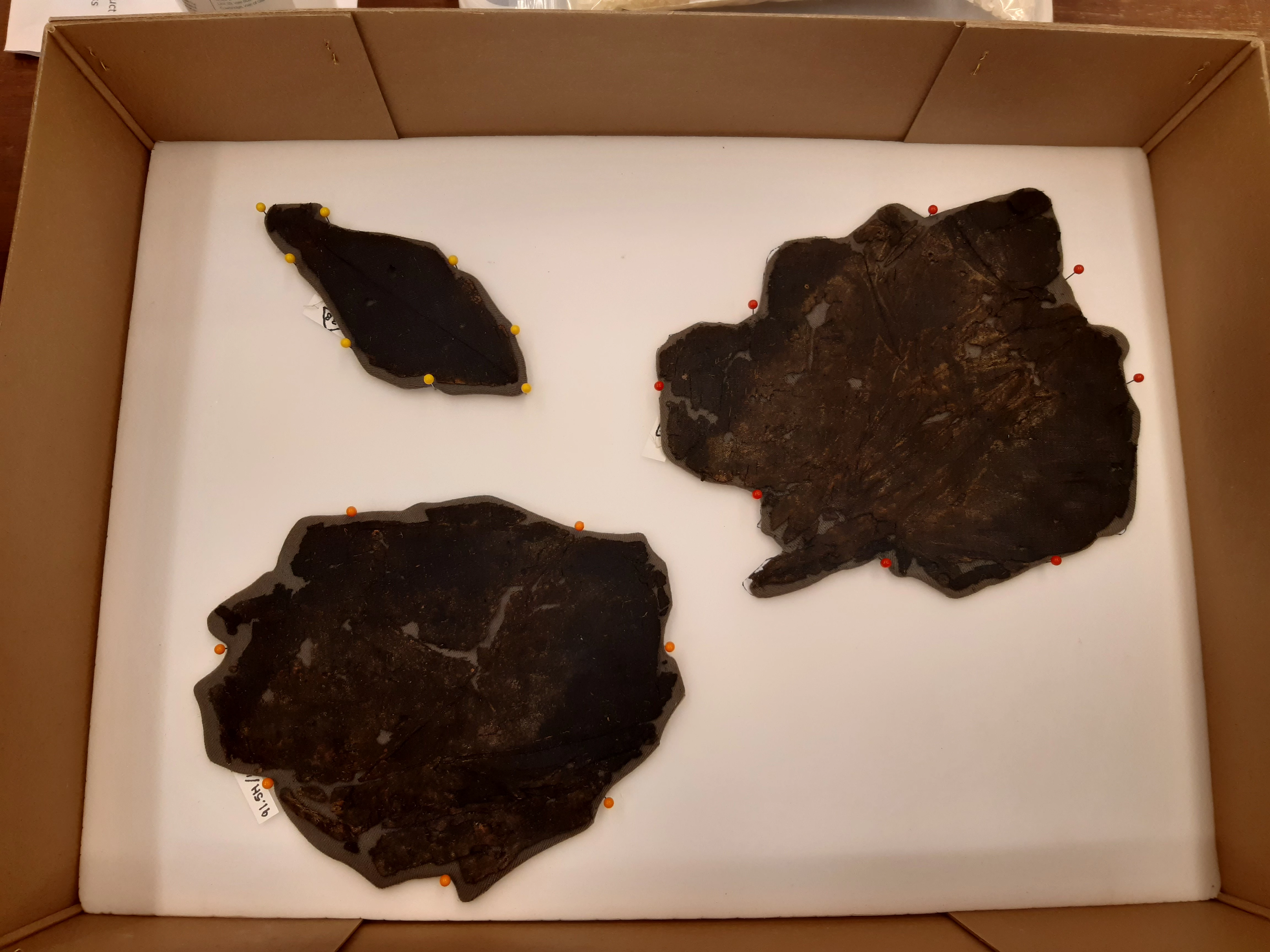The Llangorse Textile: Mounting a Delicate Fabric
, 14 January 2022
In September 2021 I was given the chance to work with the Llangorse Textile as part of my master’s degree placement at the museum. The Textile, is dated to the 10th century, made from linen and silk, and is embroidered with fine motifs; however it was discovered charred and waterlogged after the crannog in which it was found had been destroyed by fire. It is very delicate and vulnerable to harm owing to the fire damage. For more information on the Llangorse Textile, please see the list at the end of the article.
The project I was set was to create new mounts for the undecorated pieces of the textile that aren’t on display, so they can be stored safely. They had been previously stored on boards with specially cut out depressions and covered with mesh and film to protect them. In the years since, the fragments had shifted slightly and so I was charged with making new mounts to keep the fragments safe. Empty mount with stitched in label (Photo: E. Durrant)
The board was covered in specially dyed jersey fabric which has a slight knap that holds the textile fragments to the surface without the need for sewing to secure it, as this would damage its fragile structure. This was then trimmed, and a calico backing sewn down to neaten it. A completed box of newly mounted Textile pieces (Photo: E. Durrant) Empty mount with stitched in label (Photo: E. Durrant)
Finally, it was time to think storage. As the problem with the old storage method was slippage, that was the main factor that needed to be addressed. The nap of the jersey halted movement to a degree, but it wasn’t enough. Therefore, I packed an archival box with foam and pinned around the freshly mounted textile pieces; the heads of the pins holding the mounts in place. The foam will help to reduce shock and by placing pins around the pieces I have ensured that they can’t move within the box. A completed box of newly mounted Textile pieces (Photo: E. Durrant)
Further Reading/References:
Amgueddfa Cymru. 2007. The Llan-gors textile: an early medieval masterpiece. Available at: https://museum.wales/articles/1344/The-Llan-gors-textile-an-early-medieval-masterpiece/ [Accessed 4 January 2022]
Lane, A. and Redknap, M. 2019. Llangorse Crannog: The excavation of an early medieval royal site in the kingdom of Brycheiniog. Oxford: Oxbow Books

